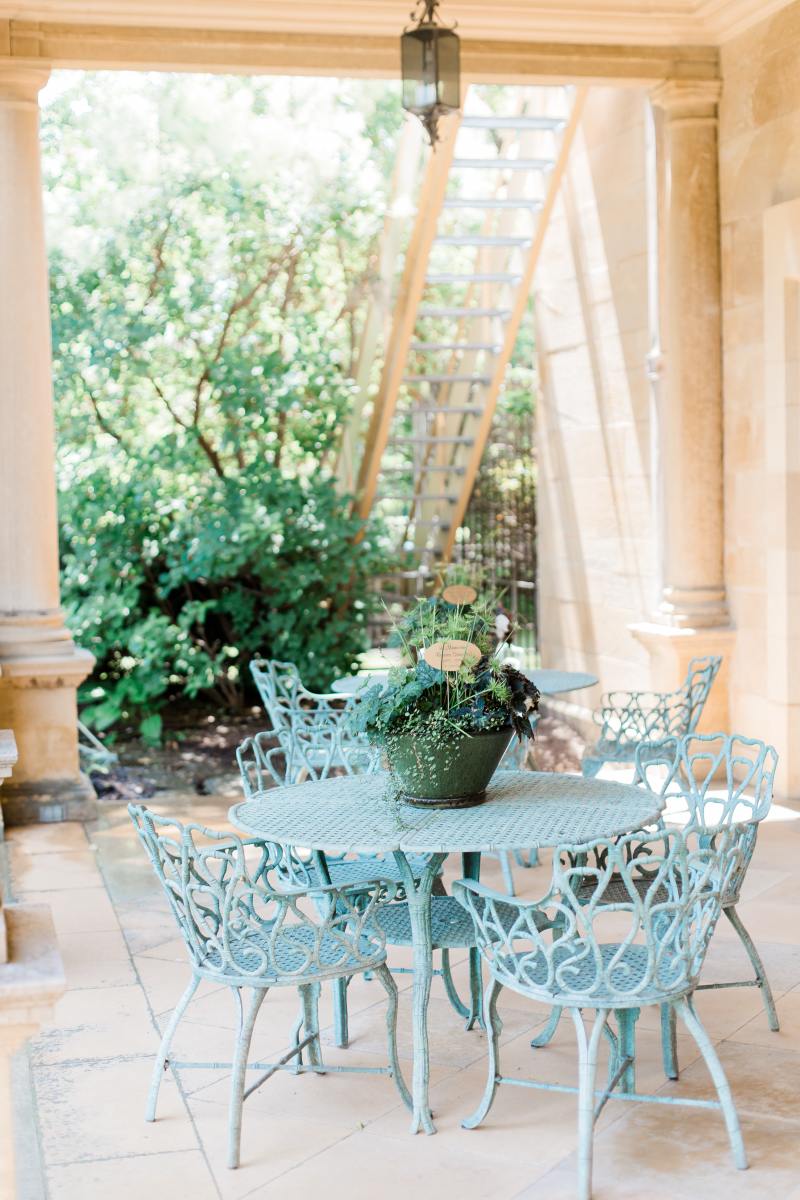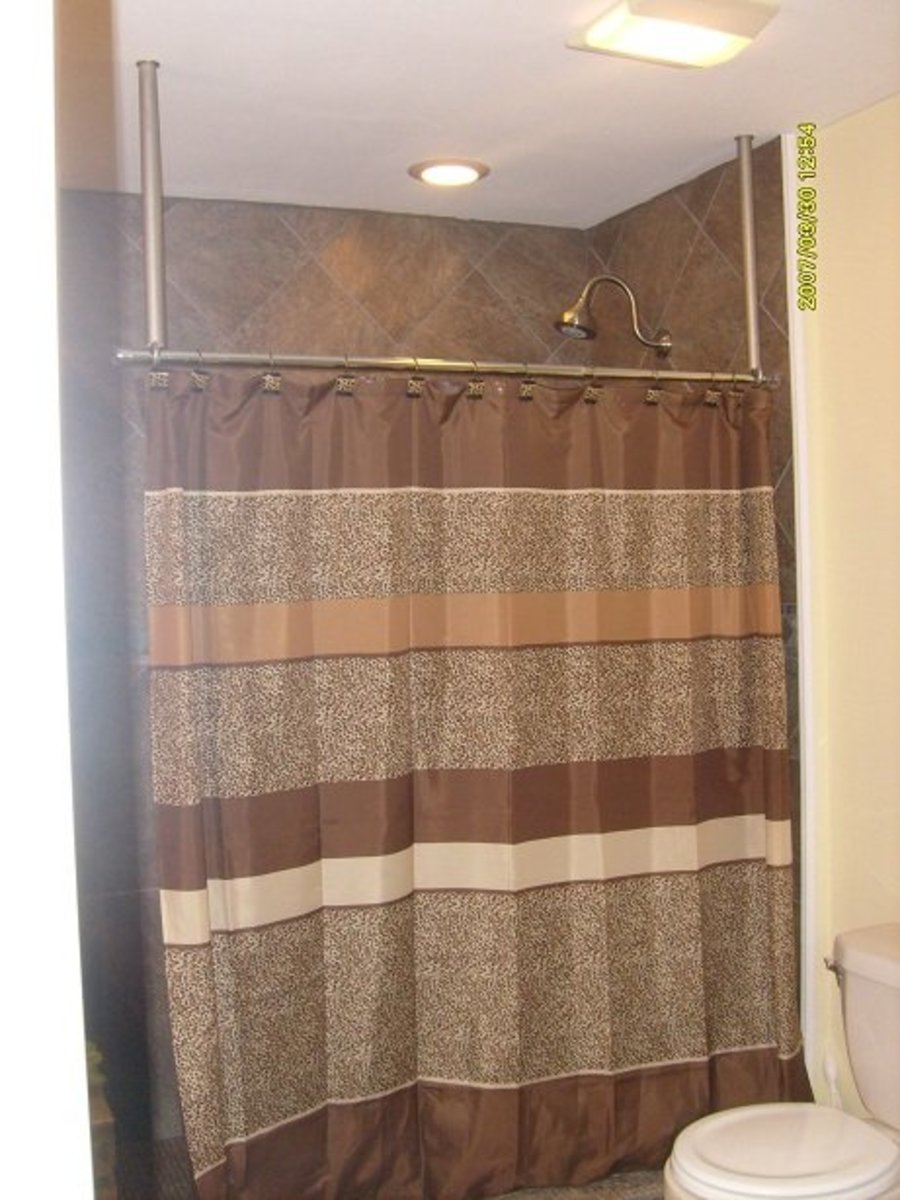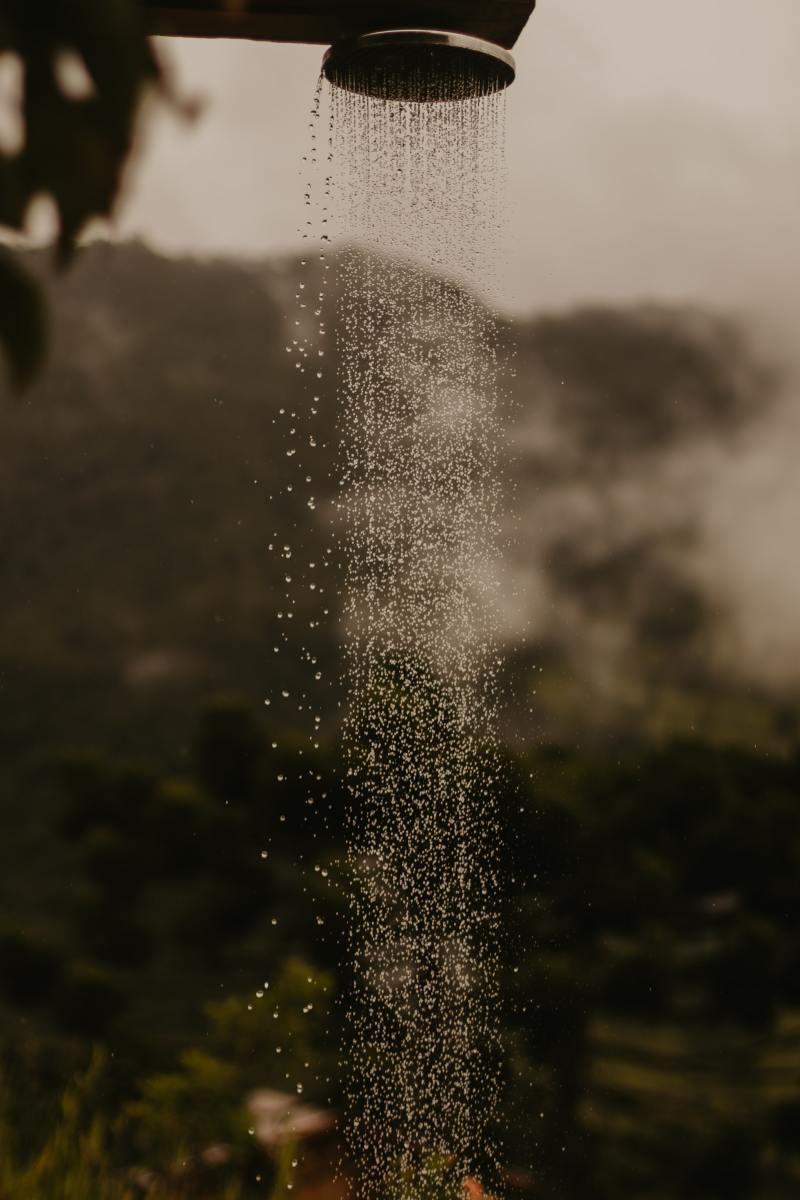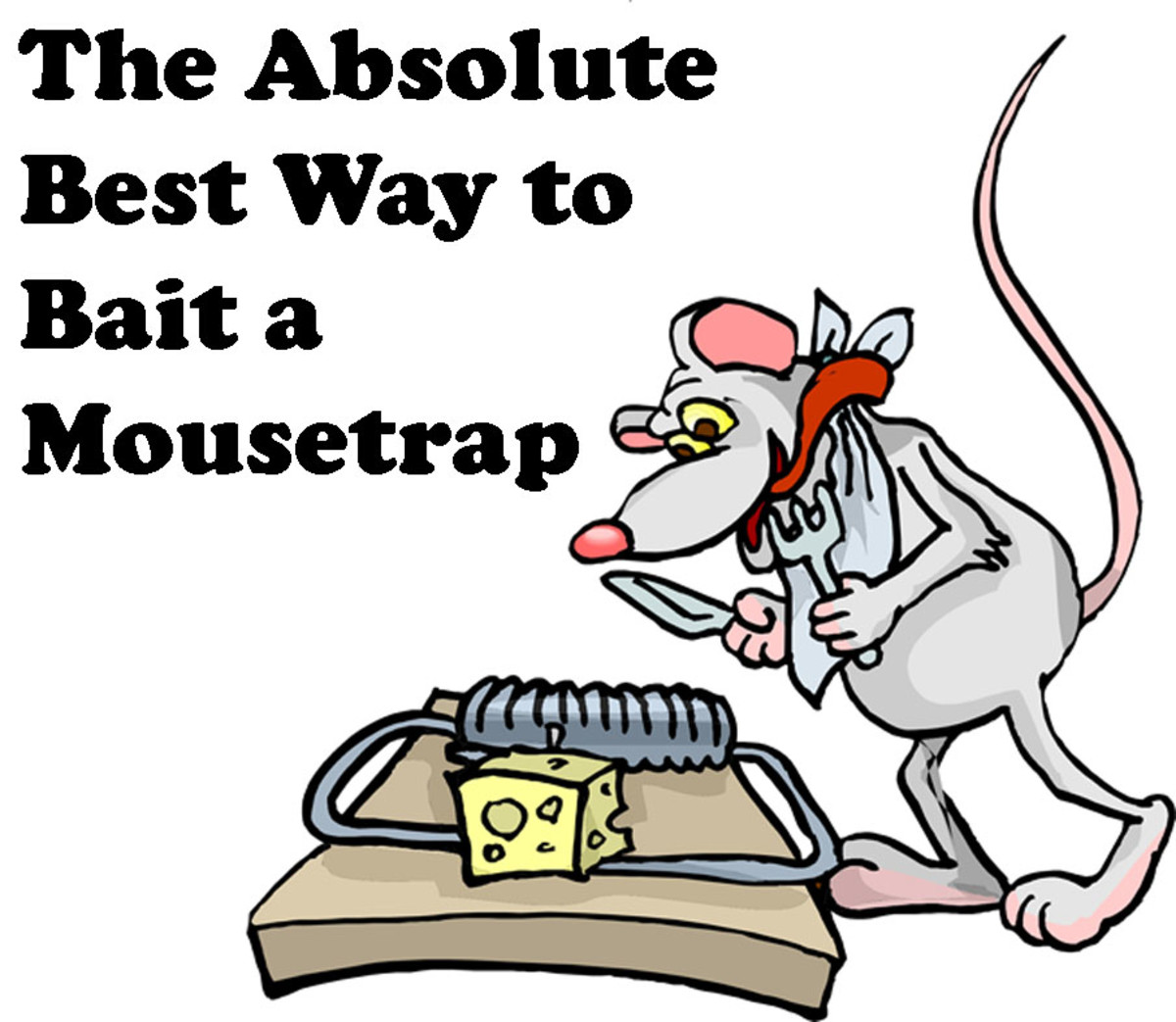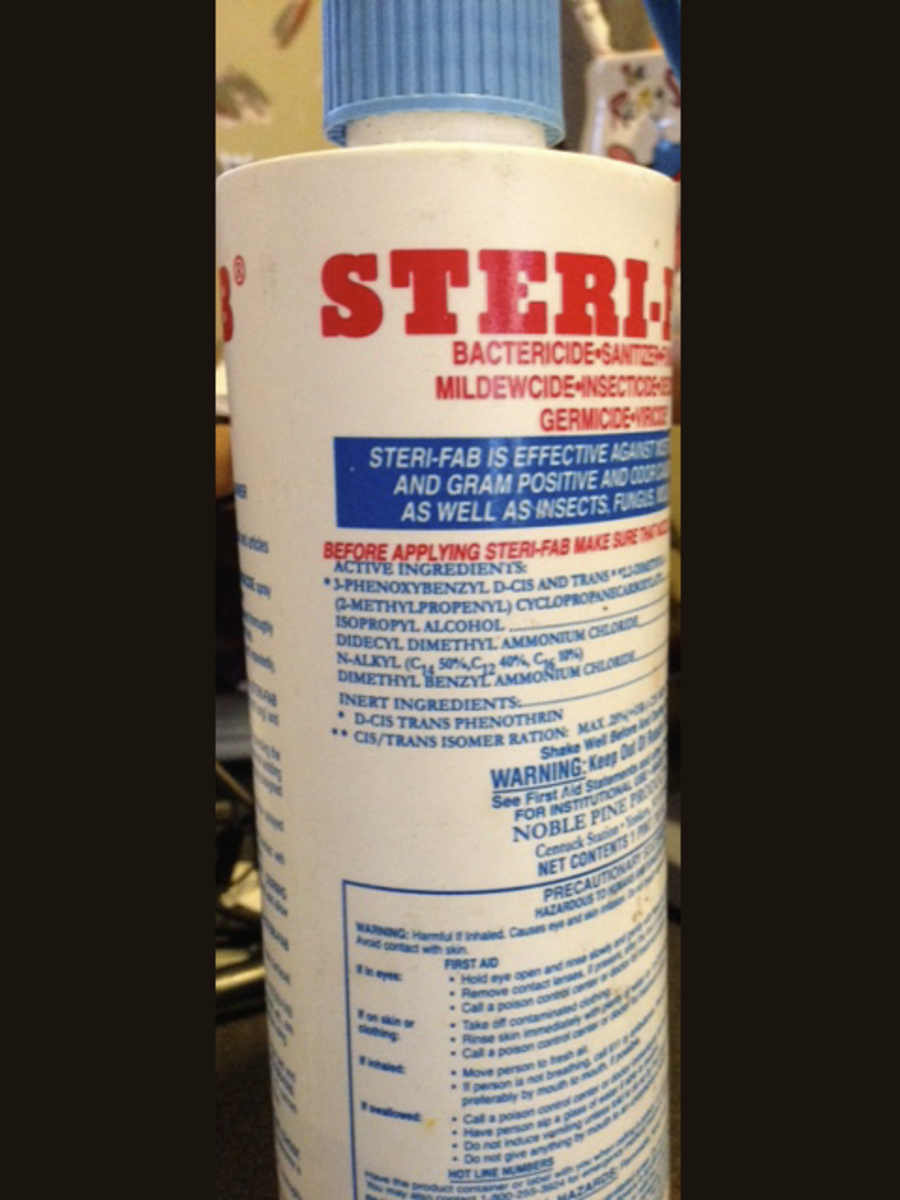Tasmania: Living in the House that Doesn't Exist. (2)
Some early photos
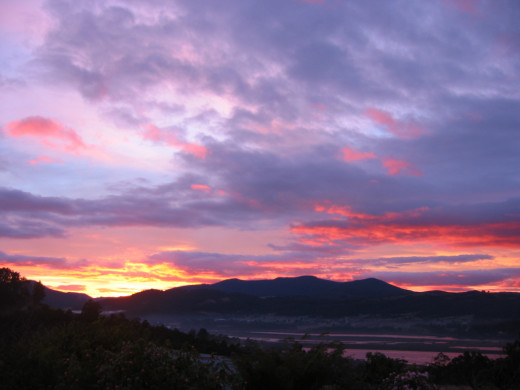
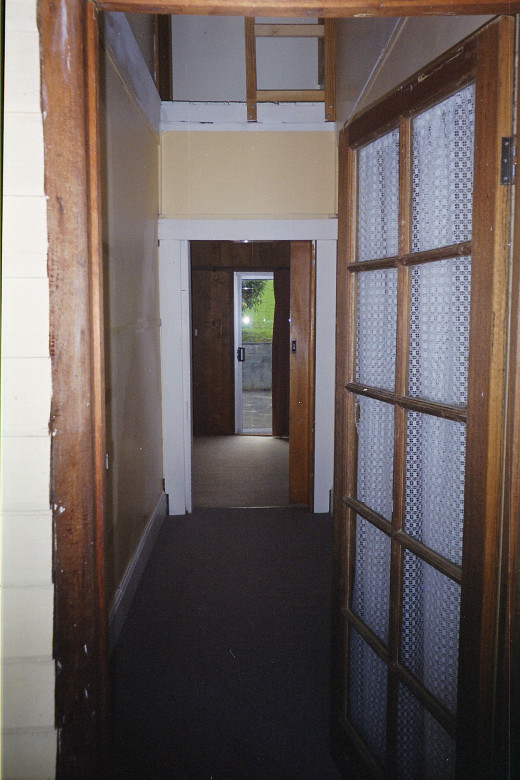
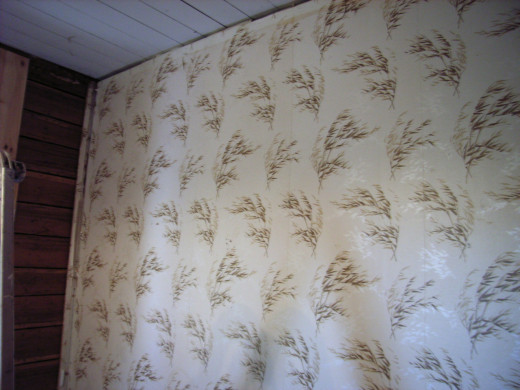
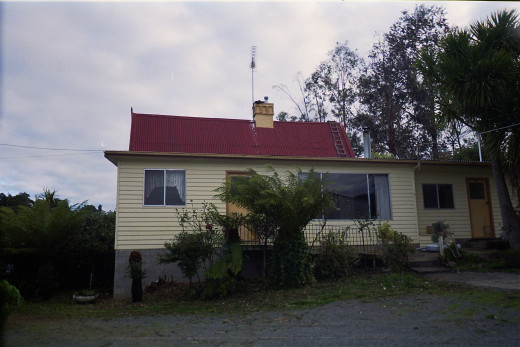
Rats, ruin and rain.
(The second day in our new house in Tasmania, and the story of how we began to settle in.)
The next day, sleet, hail and high winds buffeted the house. As the rain bucketed down, our limited furniture arrived and we spent the day lugging cartons. It was hard deciding where to put the bed and two armchairs and the TV that were unpacked first, because of the leaks and drools.
We rummaged through cartons and unpacked what was immediately useful. As there wasn’t storage nor a cupboard, we bought large plastic containers from the supermarket for all our other belongings, re-packed them and pushed them against the walls. Then we set to scrubbing out one room, which was once the old house’s lounge, and placed our bed in it. This room only had two holes through the walls that I could see daylight. They were in each corner of the floor between the skirting boards, and there was only a little gap around the window. The ceiling had cracks and stains on it and the old Baltic pine boards were not tongue and groove and had twisted. There were only a few leaks in this room, and we set buckets under them.
That night, exhausted we climbed into our bed. While trying to sleep, the rain dripped, the roof screamed and the doors blew in and out and clacked and clicked. But, those noises were acceptable. Then we heard scuffling in the walls. ‘Possums?’ I asked hopefully, as the scratching in the wall behind my head got louder.
‘Squeak,’ was the reply from behind the mouldy wallpaper.
After our sleepless night, Rod leapt out of bed with an aggressive killer look in his eyes, ate breakfast, and dashed off to the stock and station agent and returned with large buckets of rat poison. Still with that murderous glint in his eyes, he clambered up the strange wooden ladder that led into the roof space. I followed and we stood on a wooden platform, surveying the rat domain.
We knew the roof had once been shingled. I don’t think I really understood what wooden shingles from the 1800’s looked like, still in place, hanging and rotting from the batons, and under the bent corrugated iron that had been slammed over the top of it all.
On close, and accidental inspection, I discovered, every shingle harboured huge hairy black spiders and triantiwontagondalopes. These bloated and grumpy creatures waved their legs at us as we walked past and ran into my hair when I bumped my head on a beam. Every item of clothing was soon be-webbed. As we moved around in the gloom, the bugs scuttled into webby, high-rise apartments built between the shingles and the flapping, dripping iron roof.
At one end of the roof space, cut roughly into one gable external wall, was a hayloft door. (Later, from our neighbours we learned the hayloft door had been cut into the house at the end of the 1800’s, as the house was considered too substandard to live in, and the owner used it as a hay barn.) The hayloft door had gaps on either side that let little rays of light into the roof space and dripped water onto the wooden boards that made up the ceiling below. Fingers of intermittent sunlight glimmered over a lace work of spider webs. It was almost beautiful in a disgusting sort of way.
As we stood under our roof, and our eyes adjusted to the light, the sun came out and wonderful beams of light, lasered in through the hundreds of nail holes in the iron. Then there was a shower of rain and the gaps between the iron sheets began to drip.
The eaves were open, so nothing had stopped the starlings using the roof as a hotel. There were nests everywhere and little baby bird mummified corpses, a lovely snake-skin, shed by a reptile at some stage. (It flashed through my mind that the snakes probably came up for free feeds of rat and baby birds and shuddered at the thought. Snakes!) I shuddered and pointed it out to Rod.
‘Starling castle!’ Rod was obviously reading my mind. ‘Imagine the feast that snake would have in spring! It also explains why we see so many of those flying rats sitting on our roof all the time.’
‘And fouling it,’ I added. ‘And it runs into the gutters and into the water tanks, and we drink it and...’
‘Mineral water,’ said Rod, cutting me off.
I must have looked woebegone.
He patted me on the shoulder. ‘It’ll help build your immunity!’
I think he was trying to cheer me up.
We had to tread carefully in the roof, never on the boards, just on the beams, because the rain that had poured through the gaps over the years had destroyed the Baltic pine ceiling that lay beneath our feet. I couldn’t help thinking the ancient piles of mouldy hay and rat excreta had protected it in some places, like a bizarre thatch.
More bizarrely, on top of the ‘thatch’ lay an enormous amount of human rubbish. There were old paintbrushes, broken light fittings, timber off cuts of wood, paint tins, rotted papers, and surprise ... a large meat safe!
‘I can’t believe it!’ I shrieked, pointing. ‘Someone has built a meat safe up here!’
The meat safe was two meters high, just as wide, made of strong steel mesh and surrounded by twenty or thirty rattraps, some still sporting mummified cheese and one a mummified mouse. ‘I just can’t believe you wouldn’t clean up the roof, if you were going to use that! What sort of constitution did they have?’ I shuddered at the mere thought of a family sitting down to a Sunday meal of dried salami or cured ham, which had been dried amongst the seething bacteria up in the ceiling. ‘Who would eat something dried up here?’
‘Unique taste to the ham, I should think.’
‘We’re sleeping under all this!’
‘Organic!’ Rod said, still managing a smile. He pointed to one of the holes in the iron that was dripping happily onto a wet mass of hay. ‘We’ll have to replace the whole roof.’ He began laying the rat poison he was carrying. As he tossed the blocks into dark corners, the look on his face said he wouldn’t tolerate another rat.
‘How will we clean this?’ I screeched, thinking about the germs drifting down on us when we slept.
‘We’ll shut off the ladder to the ceiling immediately,’ Rod replied. ‘We’ll get to the mess when we fix the roof. If we block the roof off we’ll be a lot warmer.’
‘Good idea!’ I began to hurl blocks of poison into dark places. ‘We can use the hayloft door to get in here from outside later on.’
‘Before we do, lets check out the fourth bedroom!’ Rod made his way over to a bolted door, across a series of odd off-cut boards that had been hammered in a crazy pattern over the roof beams just beside the ladder we had climbed. He slid the bolt and opened the door with trepidation. It was amazingly neat and tidy, rattrap and dirt free. The strong door had kept the rats and birds out, and someone had gyprocked and painted it. It was really the most serviceable room in the house.
The following day, it was still raining but I decided to nip outside and get some fresh air between squalls. I had placed gumboots by the back door the night before, so I took off my nice city shoes, that I wore inside the house so they wouldn’t get covered in mud, and slipped one foot into one gumboot. Then I pushed my other foot into the remaining boot. It seemed a bit tight so I pushed my foot down harder. Something moved under my foot. Quickly, I tried to pull my foot out, but I was off balance, so I teetered and put my foot down hard. There was a horrible, squishy lumpy feel under the ball of my foot. The sensation was so revolting, I let out a scream, leapt back, slipped, and crashed onto my bottom, with the squashy thing still under my toes. In some pain, I tried to yank my boot off. As Rod raced to my side, I managed to remove my boot and shake it. Out fell a mouse!
‘I squished a mouse!’ My brain whirled and my heart hammered with guilt and revulsion. I had stood on a mouse and squashed it flat.
‘It was sick,’ soothed Rod. ‘It crawled into your boot to die.’ He smiled. ‘It wasn’t your fault. The rat poison is working!’
Our first job! We sealed the hole in the ceiling and removed the wooden ladder. It was much easier to walk down the hallway now. It seemed a big improvement. But then, the rats (and mice) really began dying. They keeled over in the roof, turned their toes up in the walls and under the flooring. They had their revenge by stinking, and stinking. There was nothing we could do about it. With the wind and rain, it wasn’t as if we could open the house and air it out. We were doomed.
our barn and our house
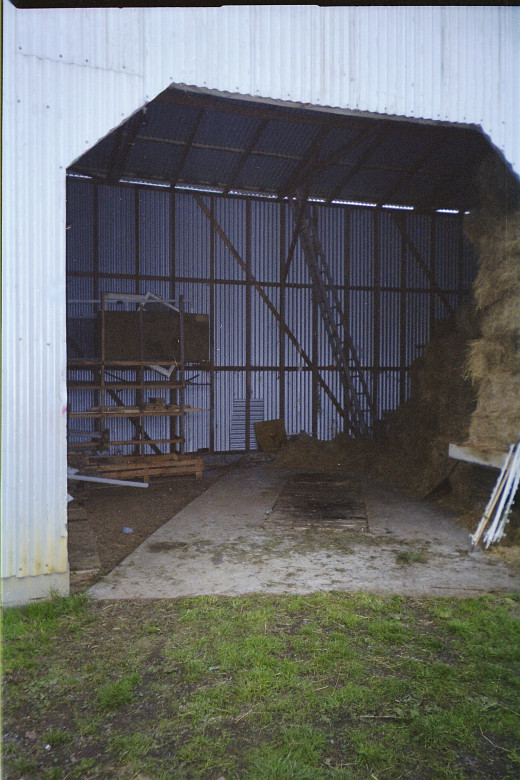
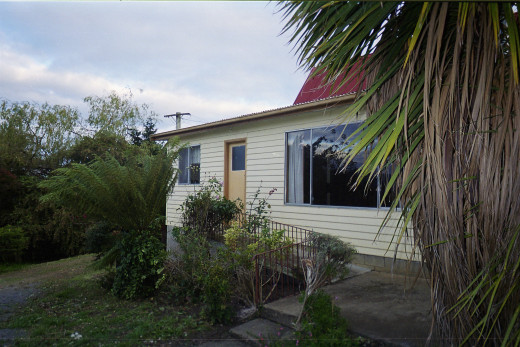
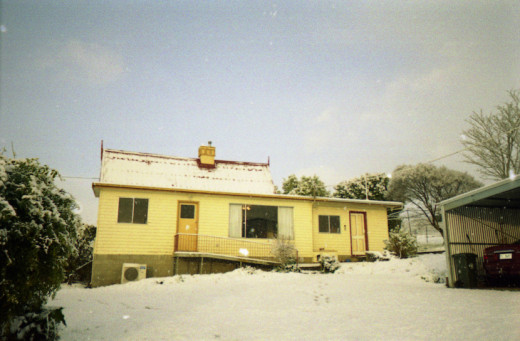
Slugs, sleet and snow.
Another of our problems was that any furniture or boxes, we had put against any wall, in any room, had to be moved every time the wind changed. When the wind shifted so did the leaks from the roof. It was still freezing, despite the hole in the ceiling being closed off.
We were burning wood at a very fast rate and we soon discovered the aluminium sliding doors and windows flexed in the wind and were very difficult to open. So Rod decided to inspect the windows. He removed a few boards around the worst offending windows that were twisted in their frames and let the wind whistle through them and discovered there weren’t any header boards above them.
‘Someone’s just sawed holes in the walls and stuck the windows in.’ He pointed to wall struts pressing on the wooden window surrounds. ‘The roof’s pressing down and that’s why they’re bent.’
‘What can we do?’
‘Replace the walls and the windows.’ He jumped down from his ladder and picked up an old newspaper. ‘In the meantime, shove papers in the gaps and hope it helps.’
So we stuffed newspapers between the panes to stop the draughts and the cold.
And that wasn’t the end of our indoor problems. At the end of a day, when you’ve been working hard, there is nothing nicer than to have a nice warm bath.
The only problem was that the bathroom stunk, the shower didn’t work very well and seemed corroded, and the old brown and white tiles were falling from the walls. Despite the smell, on our first night in the house, a warm bath called to me. (We did have a hot water system that seemed most effective.)
I filled the tub to the brim with the hottest water, to kill any rat germs on me and climbed in. The room filled with warm steam. I closed my eyes and leant back and noticed something crawling up the wall beside my head. With the steam swirling around me, I wasn’t too sure what it could be, so I put my hand out and poked at it. It was slippery and slimy. I leant forward and eyeballed it. It was a giant slug! To my horror, another and another, wriggled from cracks in the grout around the bath. I was soon being observed by lots of little slimy eyes on stalks.
This disturbing event led us to inspect the outside wall of the bathroom. We cut back the blackberries and found that there was a lot of soil built up against the wooden walls. It seems a garden bed had been placed there. Some stringy spinach and well placed rocks held the soil against the bathroom and toilet walls. It seemed an odd thing to do, but we didn’t have time to dig it all out just yet. We had to go buy some spades and shovels. We put it off for later.
When we did get around to it, we dug out the earth and discovered the soil had rotted all the boards and tumbled through and the whole garden mess was pressing against the bath. And boy did the soil stink!
As we dug and dragged the soil away, we came across a piece of tin and a big plastic sheet. We lifted the tin and plastic and found it was over our sewer pipe. The sewer pipe was smashed to pieces.
Obviously, years ago, someone (a tenant perhaps) had broken the pipe. Obviously, they didn’t want to get a plumber, so they covered it up and put a lot of earth on top. Made a nice garden out of the problem!
That explained the horrible smell! Our poo was seeping into the soil and so had everyone’s poo. I realised we had been digging in poo!
Rod and I raced to one of our outside water tanks, (We had four outside water tanks) with antiseptic and scrubbed our hands and arms. We rang several plumbers but none of them could come. There weren’t very many plumbers down this way and those that were here were booked out for weeks. We were told to try and fix it ourselves. We stared at each other in shock.
There was nothing for it, but to try. Rod took off to the hardware shop and when he returned he had become a plumber. We fixed the sewer pipe and replaced the rotting boards.
That night we had a nice warm, sweet smelling bath. Ahhhhhhh! Success.
But the rain was pelting down again. We commented that neither of us could remember so much rain. It fell and thundered on the roof and gushed from our rainwater tanks and seeped through the roof and dribbled down the walls, it also turned every path to mud.
We had started listening to weather reports and talking about weather. We had never done that before. We put a rain gauge against a tree, and went out and inspected it daily.
Then, one day the weather report told us: Wind gusts of more than 120kmph: rain and snow. That night we snuggled into our bed.
We were dry, clean and tired and sleep overwhelmed us.
Then, in the middle of the night, a ferocious blast from an Antarctic squall, and a terrifying grinding scream jolted us awake. A repetitive metal on metal clang alerted us to danger. Rod grabbed a torch and went outside. The wind grabbed his coat and lashed his face. His torch beam lit our eleven-meter corrugated iron barn wall. It was bending inwards. In the next blast, it sucked outwards like a gigantic wobble board. At any moment the whole two-story structure would blow down the hill and decapitate everything in its path.
I held the torch. Rod leapt into action. He found some rope and some wooden stakes that someone had left lying amongst some rotting hay bales at the back of the barn. He sledge-hammered the stakes into the ground. (We had bought a sledgehammer and other useful tools.) Then, we tied the ropes to the barn struts, and attached them to the stakes and tried to hold the barn in place. Inside, against the shrieking walls, we piled the rotting hay, trying to stop the violent shaking. I’d never lifted bales of hay before and they are really heavy. Grunting and groaning, and getting covered in itchy straw, and little crawly things that wiggled down your jammy top, isn’t a great experience, but we stacked about sixty bales against the wobbling walls. Exhausted, sweating and a bit tearful, we staggered back to the house. It wasn’t the best fix but it was all we could do in the middle of the night.
We came back inside, hoping it would hold, and I couldn’t help but feel rather upset on a different level, because I had only just joked that evening that the barn was better than the house and perhaps we should live in the barn and bulldoze the house.
The following day we rang the insurance company and they came out with someone from the council. You see, the barn didn’t exist either. Luckily for us, they could see the barn and the damage, and it was obvious our barn had also been built before town planning, so the insurance company came to the party and paid for new supports.
But, the council planner decided to have a really good look at our barn, and said that under today’s regulations it wasn’t legal. We were told to make it legal.
To do that, Rod had to tie the roof on properly, cement the floor and fasten all the wooden uprights to a cement foundation. Our work was cut out for us immediately. We got in a cementing contractor (The easy bit). Then, once the cement floor had been poured, Rod spent days, high on a ladder, attaching metal tie downs to the roof. Then we got some specially fabricated steel brackets that he had to hand drill into the concrete foundations. He worked like a Trojan to stop the barn from lifting off the ground again. Then we decided to give the barn some doors. It took us about two weeks to complete. We had a great barn, and a house that should’ve blown apart, but it hadn’t. (I wished.)
Later, we ordered in a few truck loads of gravel and fixed up the drive way. The place started to look like someone lived here.
Then it snowed! I have never, ever been so cold. But it was beautiful. Outside was a winter wonderland. Inside was a total freezer.
our barn with doors and all fixed up.
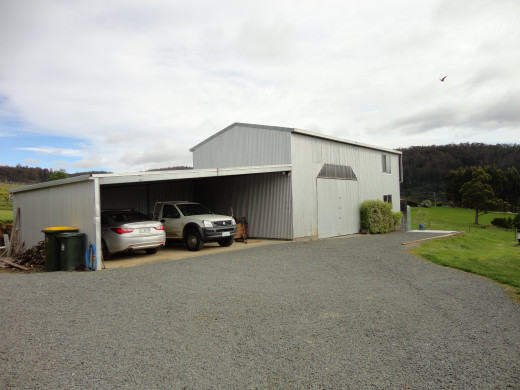
continued
I am writing the story, The House that Doesn't Exist in various Hubs. If you enjoyed this Hub then please go to Living in the House that Doesn't Exist 3.
If this is the first hub you have read then there is a pre-qual, Living in the House That Doesn't Exist 1. Please go to my Profile page and you will find it there.
cheers
Eleanor
third installment of this story can be found on:
- Tasmania: Living in the House that Doesn't Exist (3) Neighbours.
After moving to Tasmania and never having lived in the country, we began to meet our neighbours. Part 3 of our story, Living in the House that Doesn't Exist.

